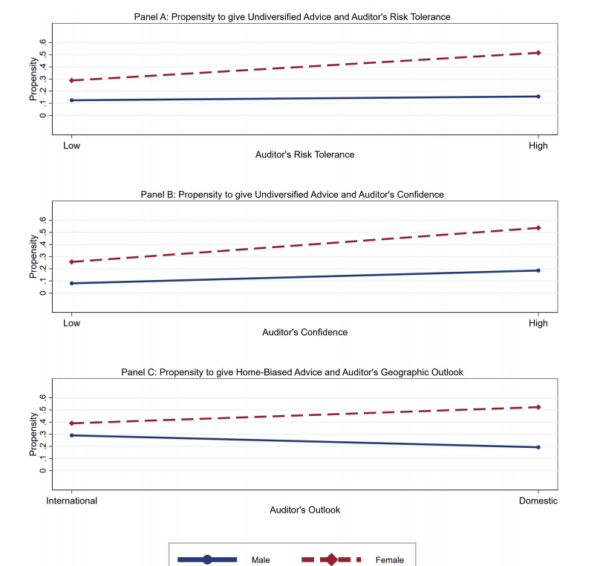This article explores whether women receive different financial advice compared to men. A study based in Hong Kong by using undercover auditors found that female clients were more likely to be advised to invest in individual or local securities instead of getting a mix of different investments. This kind of advice can make their money less safe. The study also found that when women looked confident about investing, they still got different advice than men. This suggests that some financial advisors may treat women differently, even when they shouldn’t.
Do Women Receive Worse Financial Advice?
- Utpal Bhattacharya, Amit Kumar, Sujata Visaria, and Jing Zhao
- Journal of Finance, 2024
- A version of this paper can be found here
- Want to read our summaries of academic finance papers? Check out our Academic Research Insight category
Key Academic Insights
- Women Get Different Investment Advice: Female clients were more often told to invest in just a few stocks, instead of spreading their money across many types of investments.
- Confidence Doesn’t Change the Advice: Even when women showed they were confident or willing to take risks, they still got different advice than men.
- Possible Advisor Bias: Some financial advisors might assume women know less about investing, which could lead to advice that isn’t as helpful.
Practical Applications for Investment Advisors
Check for Bias: Advisors should make sure they give the same high-quality advice to men and women.
Use the Same Process for Everyone: Having a clear way to understand each client’s goals and risk level can help avoid unfair differences.
Learn and Improve: Advisors should get training on how to treat all clients fairly and avoid hidden biases.
How to Explain This to Clients
“Everyone deserves financial advice that fits their goals, not their gender. I want to make sure you get the best investment plan for your needs. Let’s focus on what’s right for you—whether it’s spreading out risk, finding long-term opportunities, or making sure your money is working in the best way possible.“
The Most Important Chart from the Paper
This table illustrates how financial advisors’ recommendations vary based on the client’s gender and exhibited traits such as confidence, risk tolerance, and domestic outlook. The figure highlights that female clients, especially those displaying high confidence or risk tolerance, are more likely to receive suboptimal advice, such as recommendations to invest in undiversified or local securities. This visual representation underscores the presence of potential biases in financial advisory services, emphasizing the need for awareness and corrective measures to ensure equitable financial guidance for all clients.

The results are hypothetical results and are NOT an indicator of future results and do NOT represent returns that any investor actually attained. Indexes are unmanaged and do not reflect management or trading fees, and one cannot invest directly in an index.
Abstract
We arranged for trained undercover men and women to pose as potential clients and visit all 65 local financial advisory firms in Hong Kong. At financial planning firms, but not at securities firms, women were more likely than men to receive advice to buy only individual or only local securities. Female clients who signaled high confidence, high risk tolerance, or a domestic outlook were especially likely to receive this suboptimal advice. Our theoretical model explains these patterns as a result of statistical discrimination interacting with advisors’ incentives. Taste-based discrimination is unlikely to explain the results.
About the Author: Elisabetta Basilico, PhD, CFA
—
Important Disclosures
For informational and educational purposes only and should not be construed as specific investment, accounting, legal, or tax advice. Certain information is deemed to be reliable, but its accuracy and completeness cannot be guaranteed. Third party information may become outdated or otherwise superseded without notice. Neither the Securities and Exchange Commission (SEC) nor any other federal or state agency has approved, determined the accuracy, or confirmed the adequacy of this article.
The views and opinions expressed herein are those of the author and do not necessarily reflect the views of Alpha Architect, its affiliates or its employees. Our full disclosures are available here. Definitions of common statistics used in our analysis are available here (towards the bottom).
Join thousands of other readers and subscribe to our blog.

